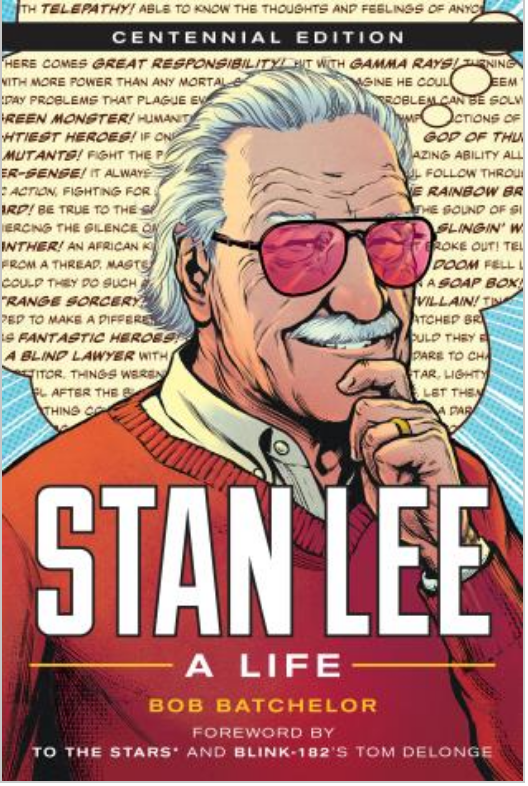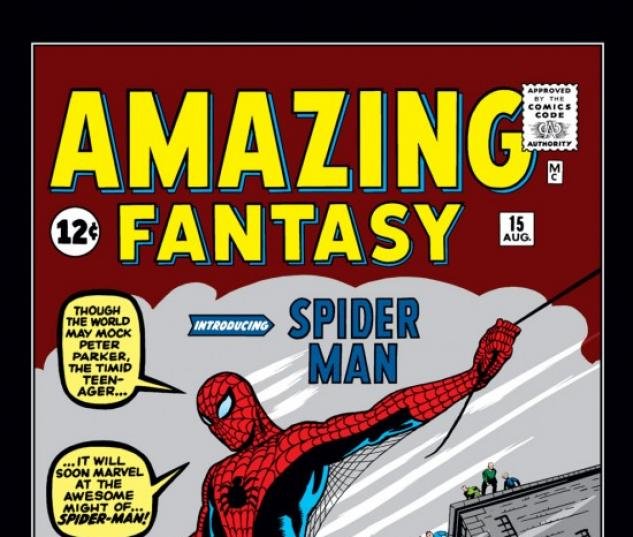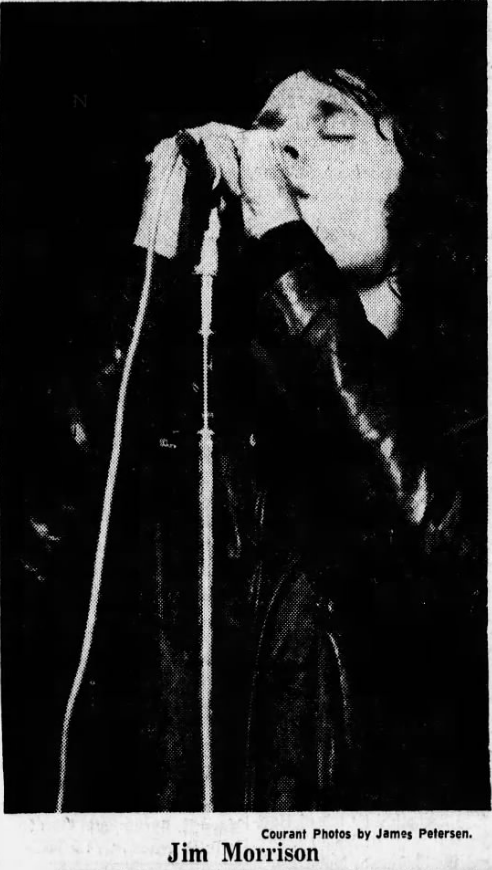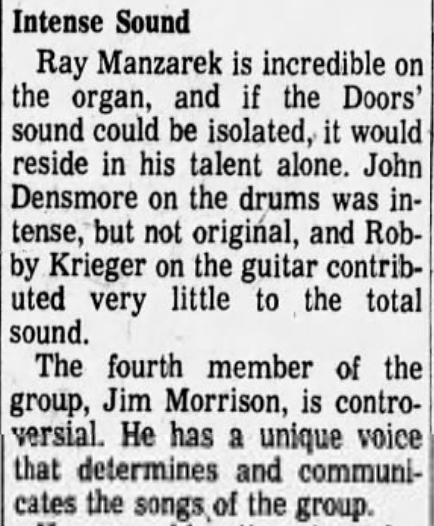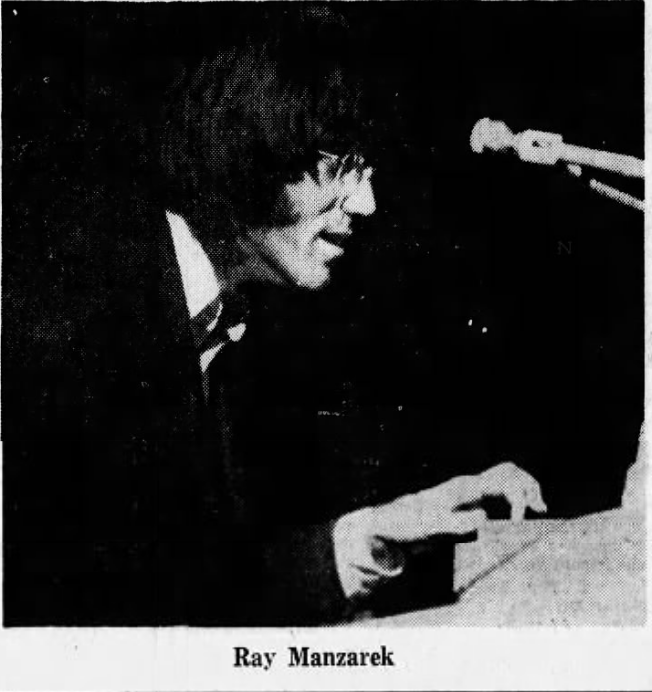Women in music have often played second fiddle next to men. However, the past couple of decades have seen something of a shift in a now almost female-led industry. The rise of stars like Beyonce has been nothing short of inspiring. From female empowerment within the industry to making themselves a brand, here are some ways women are dominating music today.
Read moreJIM MORRISON, 1943-1971
Rock legend Jim Morrison Died in Paris, July 3, 1971
Most of the world would not find out about Morrison’s mysterious death until July 9.
In April 1971, Elektra released L.A. Woman. The album reached number nine on the Billboard album chart and then remained in the top 200 for 36 weeks. Later, in June, “Riders on the Storm” came out as a single and eventually hit number 14.
Before he left for France, Jim gave an impromptu interview to Ben Fong-Torres, an editor at Rolling Stone. The singer explained that the Doors were “at a crossroads of our career,” particularly since young audiences wanted new music by new bands, not an “anachronism” like their group. He spoke of making movies and other interests. By most accounts, Morrison’s future plans didn’t seem to include the Doors.
Jim arrived in Paris on June 12, 1971. He went to Pam’s room at the Hotel George V, which he likened to a whorehouse. She wasn’t there. Before long he was across the street, reportedly drinking whiskey—one after another.
One morning John Densmore answered the phone. It was Jim calling from France. He wanted to find out how L.A. Woman was doing. Densmore told him how the first single had become a hit and that the album was getting a lot of airplay. Jim replied, “I’ll be back and we’ll do some more.”
Three weeks later he would be dead.
NEW BOOK DEAL -- NOLAN RYAN BIOGRAPHY
BOOK DEAL ANNOUNCEMENT
Cultural historian and biographer, author of Stan Lee: A Life and The Bourbon King: The Life and Crimes of George Remus, Prohibition's Evil Genius Bob Batchelor's THE RYAN EXPRESS: NOLAN RYAN'S JOURNEY TO BASEBALL IMMORTALITY. Deep dive into the extraordinary life and times of Nolan Ryan, the iconic Hall of Fame pitcher and strikeout king. This meticulously researched and entertaining written biography explores the remarkable career of the pitcher whose name is synonymous with the fastball. His blazing speed enabled him to strike out more batters than any player ever, a record that will never be eclipsed, just as his seven no-hitters will live on in immortality, to Christen Karniski at Rowman & Littlefield, in a nice deal, in an exclusive submission, for publication in summer 2026.
Happy 101st Birthday Stan Lee!
Stan Lee would have turned 101-years old on December 28. This essay looks at his extraordinary life and how he led Marvel, becoming a pop culture icon in the process.
Read moreNEW BOOKS NETWORK PODCAST -- INTERVIEW WITH JEROME CHARYN
The author of more than 50 novels, biographies, histories, graphic novels, and collections, Jerome Charyn once proclaimed that his ultimate goal in writing novels has been “to make the reader cry...to break the reader’s heart.” With its stunning, unforgettable portrayal of the forces of light and darkness, Ravage & Son delivers on the author’s aim, presenting humanity in its fully formed depravity, but also capturing life’s poignancy.
The interview focuses on Ravage & Son, but Charyn and I discuss other aspects of his renowned career, including discussion of writing style, research, literary influences, and more. Charyn is arguably the most famous writer most readers have never heard of, a bestseller in France and other parts of Europe, and a true “writer’s writer” who continues to publish acclaimed books while being lauded by major authors including Joyce Carol Oates, Michael Chabon, Don DeLillo, and a long list of others. He is a distinctive voice in American literary history.
Bob Batchelor is an award-winning cultural historian and biographer. His latest books are Roadhouse Blues: Morrison, the Doors, and the Death Days of the Sixties and Stan Lee: A Life. Visit him on the web at www.bobbatchelor.com or email at bob@bobbatchelor.com
Read moreNEW PODCAST -- "TALES OF THE BOURBON KING: THE LIFE AND TRUE CRIMES OF GEORGE REMUS"
Filled with mayhem, mountains of illicit cash, and rivers of bourbon, “Tales of the Bourbon King” presents the life and crimes of George Remus, bootleg king of the Jazz Age, a dazzling true crime spectacle. With gunfights and fisticuffs, he turned America into his violent playground, grafting his way into Warren Harding’s White House. A model for Jay Gatsby, Remus’s story epitomizes the spectacular 1920s – until it came crashing down in an improbable tale of deceit and rage, centered on the dastardly G-man who stole his wife, leading directly to a fateful gunshot that ended her life.
Read moreThe Doors Invade San Francisco: The Human "Be-In" Kicks Off the Summer of Love
Part of the education of The Doors in the City by the Bay took place at The Human Be-In, a festival featuring music, activists, and spirituality in Golden Gate Park. Twenty thousand or more people had gathered to protest a California law banning LSD that had passed the previous fall. The Doors played elsewhere throughout the weekend but weren’t established enough to play the festival. The experienced the hippie vibe, firsthand, though as part of the throngs of people that descended on San Francisco, ultimately launching the “Summer of Love.”
Read moreHappy 100th Birthday Celebration for Marvel Legend Stan Lee
Stan Lee as Artist and Producer — The Man “Behind” Marvel’s Success
Stan Lee: A Life by cultural historian Bob Batchelor
Stan Lee had been working in the comic book industry for decades before the successes of the 1960s. Lee’s most important lessons from those first two-plus decades in comic book publishing were about how to manage a business, the seemingly simple on paper, but difficult in practice nature of running a company.
Comic book publishing was not for the meek – governed by relentless deadlines in an era before technology made many of the processes more efficient. While not trained in business, Lee became a manager, which gave him insider perspective into the machinations of the industry, particularly in contrast to the artist or writer view that is solely on their specific creation. From an enterprise perspective, Lee learned everything that would enable him to re-launch Marvel in the early 1960s, ultimately overseeing the company as it became a force in comic books and later, American popular culture as a whole.
Yet, if we were just discussing Lee as an editor and manager of Marvel, the story would be truncated. Of course, he was also a creator, as were so many of the early comic book artists and writers, more or less forced into developing managerial acumen, because, well someone had to run the business side. What emerged in Lee as a result of the melding of the business and creative parts of his work life was a keen sense of responsibility. He had to nurture the artistic aspects of comic book creation, from writing and editing to assigning cover art and lettering, while also overseeing the business side, from managing budgets to working with the production team to ensure deadlines were met in an industry with slim margin for error. Ultimately, all responsibility wrapped back to Lee.
Rather than these viewpoints warring inside Lee as he built his career, he used them as a way to create a central worldview: Comic books were important as tools to educate. They had value for readers – regardless of age – as a means of education, including outlining a value system based on the complexity of the human experience, not unlike literature and poetry. Lee realized that this perspective stood in contrast to the mainstream opinion that comic books were “pulp,” simple stories aimed at children and feeble-minded adults (a common belief through the 1960s).
Without going into deep analysis of the controversial creation of Spider-man – an amalgamation of the thinking and experiences lived by Lee, Steve Ditko, Jack Kirby – the character’s popularity provided Lee with an instrument to explore his ideas about how important comic books could be as tool for education. Spider-man gave him influence and proved that he could help shape culture in ways unimaginable during the first 20 years of his career.
Continually attempting to establish Marvel as different, Lee started calling the company the “House of Ideas,” which stuck with journalists and became part of the company’s cachet. If a downside existed in the surge of Marvel comics into the public consciousness it is that Lee and his bullpen teammates had to balance between entertainment, social issues, and profitability. Stan valued the joy derived from reading comics, but he wanted them to be useful: “Hopefully I can make them enjoyable and also beneficial…This is a difficult trick, but I try within the limits of my own talent.” Lee wanted to have it both ways – for people to read the books as entertainment, but also be taken seriously.
“Hopefully I can make them enjoyable and also beneficial…This is a difficult trick, but I try within the limits of my own talent.”
At the same time, Marvel had to sell comics, which meant that little kids and young teenagers drove a sizeable chunk of the market. In 1970, Lee estimated that 60 percent of Marvel’s readers were under 16-years old. The remaining adult readership was enormous given historical numbers, but kept Lee focused on the larger demographic. “We’re still a business,” he told an interviewer. “It doesn’t do us any good to put out stuff we like if the books don’t sell…I would gain nothing by not doing things to reach the kids, because I would lose my job and we’d go out of business.”
On one hand, the industry moved so quickly that Lee and his creative teams constantly fought to get issues out on time. The number of titles Marvel put out meant that everyone had to be constantly producing. So, when Lee was in the office or working from home, he committed to getting content out. Roy Thomas recalls, “Stan and I were editing everything, and the writers were editing what they did, and we had a few assistant editors that didn't really have any authority...that was about it.” However, that chaotic atmosphere made it rife for animosities to form or fester. Lee needed content out the door and Goodman tried to maintain control over cover artwork and other little details that inevitably slowed down the process.
Thomas’ ascension and Lee’s pull toward management did shift the editorial direction, if for no other reason than that Stan wouldn’t be writing full-time any longer. “It was time to kind of branch out a little bit,” Thomas explained. “We wanted to keep some of that Marvel magic, and at the same time, there had to be room for other art styles and other writing styles.” The most overt change came when Lee turned in the copy for The Amazing Spider-Man #110. The late 1971 issue was the last Lee wrote for the character. Writer Gerry Conway succeeded Lee and the next books in the series would be co-created by Conway and star artist John Romita.
While many adults looked down on Lee for writing comic books, especially early in his career, he developed a masterful style that rivals or mirrors those of contemporary novelists. Lee explained:
Every character I write is really me, in some way or other. Even the villains. Now I’m not implying that I’m in any way a villainous person. Oh, perish forbid! But how can anyone write a believable villain without thinking, “How would I act if he (or she) were me? What would I do if I were trying to conquer the world, or jaywalk across the street?...What would I say if I were the one threatening Spider-Man? See what I mean? No other way to do it.”
Lee’s distinctive voice captured the essence of his chosen medium.
Lee also understood that the meaning of success in contemporary pop culture necessitated that he embrace the burgeoning celebrity culture. If a generation of teen and college-aged readers hoped to shape him into their leader, Lee would gladly accept the mantle, becoming their gonzo king. Fashioning this image in a lecture circuit that took him around the nation, as well as within the pages of Marvel’s books, Lee created a persona larger than his publisher or employer. As a result, he transformed the comic book industry.
Unlike Bob Dylan or Jann Wenner, for example, Stan didn’t plan this revolution. He didn’t say to himself that he would cocreate a character that would become part of American folklore. It wasn’t planned, yet it seems completely intentional.
Baby boomers grew up with Stan’s voice in their heads. Interestingly, Lee spoke for Marvel’s superheroes to eager audiences talking about the characters, while at the same time creating the dialogue in the actual comics. So he was the person talking about the characters he himself was voicing. In addition, he wasn’t just in the media; Stan was talking directly to readers within the pages. He was Spider-Man’s voice, while also talking about the comics, the company, his colleagues, and the world to a captivated audience.
By the time Gen Xers started reading comics, Marvel’s style was wholly entrenched. As each generation ages out of traditional comic book reading age, Lee’s voice becomes commensurate with nostalgia—a part of our lives we look back to with fondness and equate with better times. Immersed in a heavily capitalistic, entertainment-driven culture, embedded stories are ones that get retold, and Marvel superheroes become a balm for a cultural explosion driven by cable television, global box office calculations, and the web. In what seems like the blink of an eye, the Marvel voice became the voice of modern storytelling.
Why did the Marvel Universe come to dominate global popular culture? Largely based on Stan supplying a voice to a mythology. Certainly, the creation of the Marvel Universe was a team effort, like all forms of entertainment, nothing is created in a vacuum. There are unheralded people in the process and those who deserve as much credit as Lee for their roles. Yet, it was the unmistakable “music” that Lee conceived that launched a cultural revolution.
Crisscrossing the nation while speaking at college campuses, sitting for interviews, and conversing with readers in the “Stan’s Soapbox” pages in the back of comic books, Lee paved the way for intense fandom. His work gave readers a way to engage with Marvel and rejoice in the joyful act of being a fan. Geek/nerd culture began with “Smiley” and his Merry Marauding Bullpen nodding and winking at fans each issue. Lee’s commitment to building a fan base took fandom beyond sales figures and consumerism to authentically creating communities. The Marvel Cinematic Universe has spun this idea into global proportions. It is the fans of the MCU across film and television that has reinforced and spread Stan’s voice across the world.
Amazing Fantasy #15, the comic that launched Spider-Man into the popular culture stratosphere
The superheroes that Lee and his co-creators brought to life in Marvel comic books remain at the heart of contemporary storytelling. Lee created a narrative foundation that has fueled pop culture across all media for nearly six decades.
By establishing the voice of Marvel superheroes and shepherding the comic books to life as the creative head of Marvel, Lee cemented his place in American history. According to analyst Paul Dergarabedian, the results have been breathtaking: “The profound impact of Stan Lee’s creations and the influence that his singular vision has had on our culture and the world of cinema is almost immeasurable and virtually unparalleled by any other modern day artist.”
“The profound impact of Stan Lee’s creations and the influence that his singular vision has had on our culture and the world of cinema is almost immeasurable and virtually unparalleled by any other modern day artist.”
Happy Birthday Jim Morrison -- The Legendary Dark Knight of American Rock Music History
The “real” Jim Morrison comes to life in Roadhouse Blues: Morrison, the Doors, and the Death Days of the Sixties by award-winning cultural historian Bob Batchelor. December 8 is Jim Morrison’s birthday. He would have been 79 years old. His death at 27 is part of rock music folklore and pop culture history, but what a tragedy.
Read moreDOORS CONCERT REVIEW -- 55 YEARS AGO!
“Primitive, Grotesque, and Blatantly Sexual”
Jim Morrison, lead singer of the Doors, Hartford, December 2, 1967
Hartford Courant reporter James Petersen was not a fan of The Doors. In his review, published 55 years ago on December 2, 1967, he centered on then-accepted notion that anything from California was odd and drug-addled. “Beautiful, beautiful” is most certainly a drug reference, his indication of how a high Californian would react to the spectacle of the band and its leather-clad singer.
Harsh criticism of the Doors concert
Rather than declare the Doors bad, Petersen puts his opinion in the mouth of an older “ticket seller,” who he believes would see the band, audience, and performance as “primitive, grotesque, and blatantly sexual.” What the reporter wants the reader in conservative Hartford, Connecticut, to understand is that the Doors and Jim Morrison are dangerous. The coded language is the type the band often faced when looked at by those who represented the establishment or “traditional” values.
In other words, devalue the band and its members as both musicians and people: fear the grotesque and outlaw the sexual.
The drumbeat against the Doors and Morrison picked up pace in late 1969, especially after Morrison was arrested on stage in New Haven just one week later. The entire nation — and the federal government — would turn against the Doors, a slippery slope that would be the catalyst for Morrison’s untimely death just three and a half years later.
The reporter is obviously an organ fan…he loves Ray’s organ!
Surprisingly, the only member of the Doors that the reporter enjoyed was Ray Manzarek’s organ. The irony here is that Ray’s driving sound, ranging from dark and eerie to carnival-like and filled with joy, was the sound of the band. How could they be primitive if he liked their essential sound?
Ray Manzarek — “Keyboardist” of the Doors and mastermind of their unique sound!
When Petersen did opine on where he ranked the Doors versus other bands, he ranked them lower than both Procol Harum and the Paul Butterfield Blues Band.
Read the story of the Doors and the Death Days of the Sixties in Roadhouse Blues, published by Hamilcar Publications! For the holidays, the book has been discounted to $15 when ordered at: https://indiepubs.com/products/roadhouse-blues/




